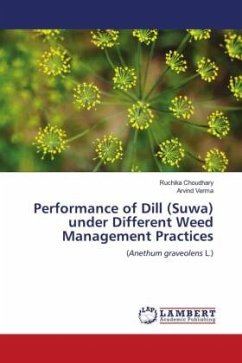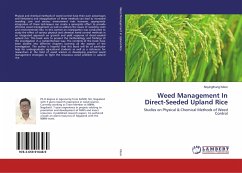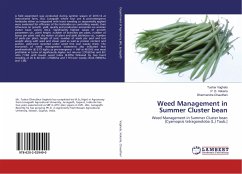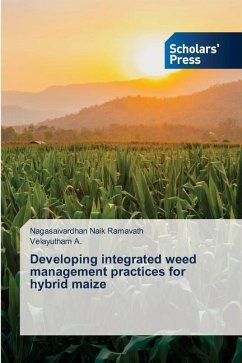
Fieldpea under FIRBs, Irrigation Levels and Weed Management Practices
Water Saving and Moisture Conservation for Agricultural Sustainability
Versandkostenfrei!
Versandfertig in 6-10 Tagen
33,99 €
inkl. MwSt.

PAYBACK Punkte
17 °P sammeln!
Water is the most critical resource for agriculture, gaining primacy even over soil. India has only about 4 per cent of the world's freshwater resources. Many areas, especially semi-arid region of the country, crop suffer from water scarcity during rabi season. Furrow irrigated raised-bed (FIRB) system of planting of rabi pulses like fieldpea can be a viable technology in reducing the water losses and utilizing conserved soil moisture. Fieldpea is one of the important rabi pulse crops grown in northern India. The productivity of fieldpea in the country is very low, which is mainly due to culti...
Water is the most critical resource for agriculture, gaining primacy even over soil. India has only about 4 per cent of the world's freshwater resources. Many areas, especially semi-arid region of the country, crop suffer from water scarcity during rabi season. Furrow irrigated raised-bed (FIRB) system of planting of rabi pulses like fieldpea can be a viable technology in reducing the water losses and utilizing conserved soil moisture. Fieldpea is one of the important rabi pulse crops grown in northern India. The productivity of fieldpea in the country is very low, which is mainly due to cultivation on marginal lands with residual soil moisture and lack of site specific agro-techniques especially the crop establishment, irrigation schedule and weed management. Keeping all above facts in View, the present study was conducted to study the response of fieldpea to different planting methods, irrigation levels and weed management practices.



![RESPONSE OF SUMMER OKRA [Abelmoschus esculentus (L.) Moench.] Cover RESPONSE OF SUMMER OKRA [Abelmoschus esculentus (L.) Moench.]](https://bilder.buecher.de/produkte/63/63486/63486474n.jpg)

![REAKTION VON SUMMER OKRA [Abelmoschus esculentus (L) Moench] Cover REAKTION VON SUMMER OKRA [Abelmoschus esculentus (L) Moench]](https://bilder.buecher.de/produkte/66/66995/66995336n.jpg)
![RESPOSTA DO OKRA DE VERÃO [Abelmoschus esculentus (L) Moench] Cover RESPOSTA DO OKRA DE VERÃO [Abelmoschus esculentus (L) Moench]](https://bilder.buecher.de/produkte/66/66996/66996639n.jpg)
![RÉPONSE DE SUMMER OKRA [Abelmoschus esculentus (L) Moench] Cover RÉPONSE DE SUMMER OKRA [Abelmoschus esculentus (L) Moench]](https://bilder.buecher.de/produkte/66/66996/66996507n.jpg)
![RISPOSTA DELL'OKRA ESTIVO [Abelmoschus esculentus (L) Moench] Cover RISPOSTA DELL'OKRA ESTIVO [Abelmoschus esculentus (L) Moench]](https://bilder.buecher.de/produkte/66/66996/66996678n.jpg)
![OTVET LETNEJ OKRY [Abelmoschus esculentus (L) Moench] Cover OTVET LETNEJ OKRY [Abelmoschus esculentus (L) Moench]](https://bilder.buecher.de/produkte/66/66996/66996122n.jpg)


